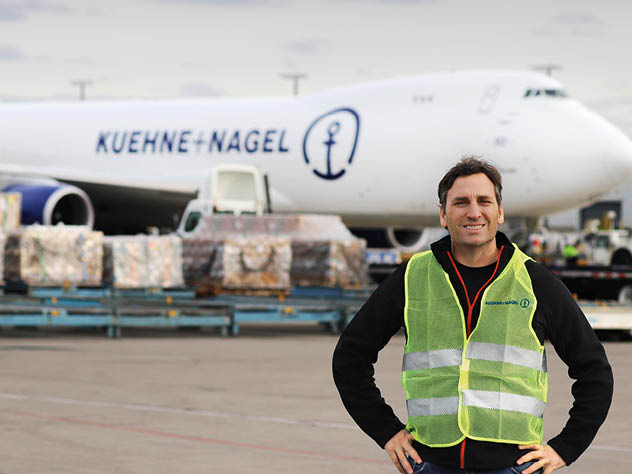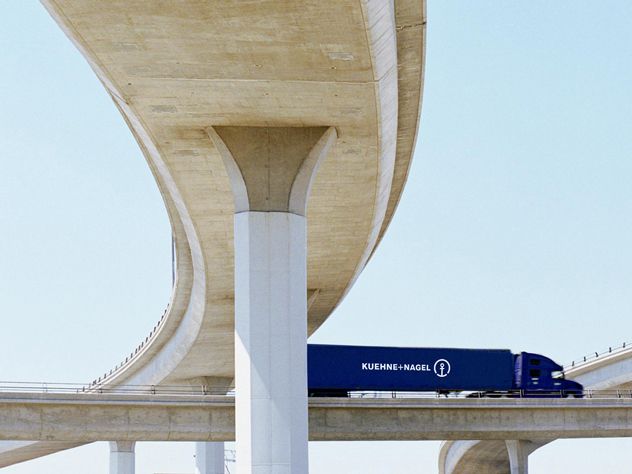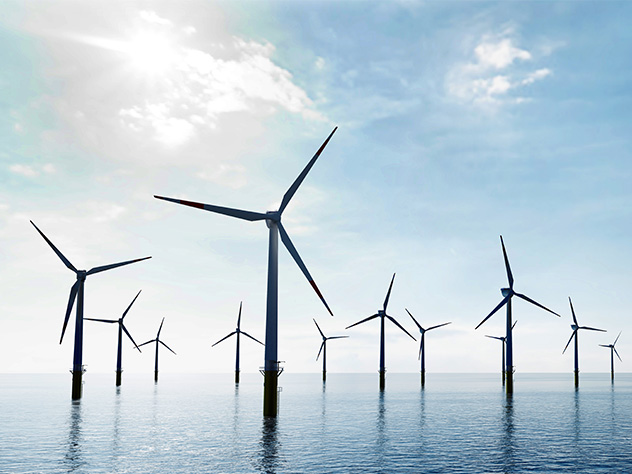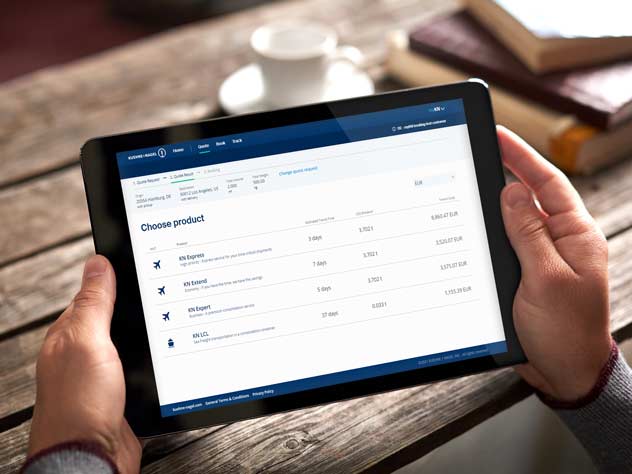Regardless of the mode of transport we look at – land, sea, air – engines are needed to move our ships, aircraft and trucks. To run these engines we normally use fossil fuels. These fuels are all based on oil that has been extracted from far below the earth’s surface. It contains carbon and other chemical compounds that would normally not surface the earth and therefore would not come into our atmosphere.
The majority of CO2e emissions from transportation comes from the burning of fossil fuels. The logistics industry is making great efforts to achieve a reduction in these emissions through engines; ideally so that there are no carbon emissions at all.
What is sustainable fuel?
Known as biofuel in sea and road logistics and Sustainable Aviation Fuel (SAF) in the aviation industry, sustainable fuels have almost identical chemical and physical characteristics to those of conventional fuels, and are the most effective measure for the industry to significantly reduce its carbon footprint. A fuel is called “sustainable” if it can be proven that the material used for production of the fuel won’t emit more CO2e than it has previously absorbed from the atmosphere or if it has already been considered “waste” and would not have been used any longer. Furthermore, in case seeds or vegetables are used as a feedstock for producing these sustainable fuels, it is ensured that the plants are grown on farmland that is unsuitable for any human food harvesting.
What is sustainable fuel made of?
In general, there are two types of sustainable fuels: the ones made from biological mass and the ones we call synthetic or eFuels. At the moment, only biologically produced sustainable fuels are commercially available. Depending on the feedstock used we can achieve carbon emission reductions of up to 90%.
As the biomass used is not available in unlimited volumes, there is a natural limit of biofuel availability. For the aviation sector it means that bio-based SAF will never be able to cover more than 10% of the overall global fuel need. The future is therefore synthetic fuels or eFuels, which take carbon from the atmosphere and combine it with hydrogen or other elements. Synthetic SAF is considered to be the long‐term solution for the aviation industry as it can be produced without availability limits, avoiding biomass supply limitations, and can reduce emissions up to 100%. Synthetic fuels have not yet been produced industrially and are available only in laboratory quantities. To promote synthetic SAF, Kuehne+Nagel has committed to supporting the world's first production site for synthetic crude oil in Germany.
In sea freight, low carbon fuels are in an advanced development stage such as ammonia, hydrogen and methanol with some first vessels on order. However, the availability of larger, fully CO2 neutral container ships that can cover global routes on a larger scale is still 5-10 years away.
Is sustainable fuel entirely carbon neutral?
Biofuels reduce CO2e emissions up to 90% depending on the base they were made of. If you take plants as the sources of the waste-based feedstock, they will absorb CO2 as they grow. The absorption of CO2 by these plants offsets the CO2 that is emitted while making and burning biofuel.
However, biofuel is not entirely carbon neutral as it involves growing, harvesting and transporting the raw material, and producing the fuel. Alternatively, eFuels or synthetic fuels can reduce emissions up to 100%.
How much sustainable fuel can be put into an aircraft, ship or truck?
Aircraft
In theory, it would be possible to fly an aircraft 100% with SAF. There have been some test flights and the newest engine models test with SAF only. However, current regulations by the aviation authorities allow a maximum blend of 50% SAF. In practice, due to limited availability of SAF and related costs, we never see such a high blend and typically have less than 1% of SAF inside an aircraft tank. It doesn’t mean that shippers can`t achieve a desired reduction of 100%. At Kuehne+Nagel, we operate under the book & claim sourcing model, which is a common practice to increase sustainable fuels adoption and optimise its sustainability avoiding transport emissions. With the book & claim principle, SAF is not physically transported to a specific airport and fueled into a specific aircraft. Instead, it goes into the fuel system at an airport close to the SAF production facility. This way we can purchase any volume of SAF without technical limitations such as blending limits. Then the volume of SAF that was used is linked to the corresponding amount of carbon emissions reduction.
Ship
In sea freight, vessels can run on up to 30% biofuel blended with conventional fuels. Following the same principle as in air freight, Kuehne+Nagel offers the Mass-Balance-Concept allowing to allocate fully traceable biofuel contingents to cargo shipped on a regular fuel vessel.
Truck
For trucks, we see Hydro-treated Vegetable Oil (HVO) as a strategic bridging technology that will increase in demand over the next three years. It is a long haul focus, offers up to 90% reduction in CO2 emissions and is already being used in our own fleet of trucks and carriers on select routes in Europe.
In addition, trucks can run 100% on HVO and it can be added directly to the truck without having to make any modifications and without any reduction in vehicle performance. HVO also has the added flexibility that it can be handled as a ‘drop-in’ alternative to fossil diesel without the requirement to clean out the existing oil stock. For example, a round-trip averaging 3,700 km requires just one fuel up at the onset.
Kuehne+Nagel sustainable fuel offering
“As one of the world’s largest logistics providers, operating globally, we are driving our own transition to a zero carbon business model and support our customers with their transition as well.”
– Andrea Debbane, Global Head of Sustainability at Kuehne+Nagel
This entails a close relationship where we can offer our customers specific services:
- measuring the emissions in the transport and logistics of their supply chain;
- avoiding emissions by providing them with alternative transport modes, routes and carrier options;
- reducing their emissions by procuring alternative low-carbon fuels.
We provide innovative and easily customised shipping options for all transport modes:
What are the key benefits of using sustainable fuels?
- They lead the way to a zero-carbon economy, boost innovation and fulfill your emissions reduction targets.
- Our sustainable solutions are available on all routes for all modes and all customers worldwide.
- Power your products with alternative fuels with one point of contact, directly via the logistics provider.
With our sustainable fuel solutions for all modes of transport, you can shift from intent to action by creating the low-carbon economy of the future today. Our experts are ready to support!











